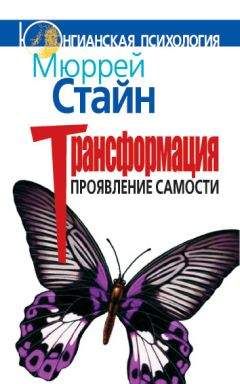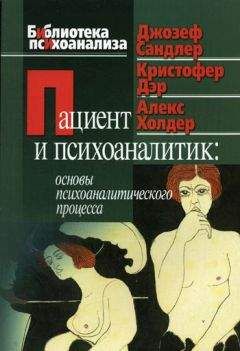Хайнц Кохут - Восстановление самости
Ornstein, P. H. (1974a), A Discussion of Otto E Kernberg's «Further Contributions to the Treatment of Narcissistic Personalities» Internat.]. Psycho-Anal, 55: 241–247.
Ornstein, P. H. (1974b), On Narcissism: Beyond the Introduction, Highlights of Heinz Kohut's Contributions to the Psychoanalytic Treatment of Narcissistic Personality Disorders. The Annual of Psycho-Analysis, 2: 127–149. New York: International Universities Press.
Ornstein, P. H. (1975), Vitality and Relevance of Psychoanalytic Psychotherapy, Comprehensive Psychiat., 16: 503–516.
Painter, G. (1959), Proust. TheEarly Years. Boston: Little, Brown.
Painter, G. (1965), Proust. The Later Years. Boston: Little, Brown.
Palaci, J. (1975), Reflexions sur le transfert et la theorie du narcissisme de Heinz Kohut. In: Rev. Franc, de Psychoanal., 39: 279–294.
Pasche, E (1965), L'antinarcissism. In: Rev. Franc, de Psychoanal, 29:503–518.
Pfeffer, A. Z. (1961), Follow-up Study of a Satisfactory Analysis./ Amer. Psychoanal. Assn., 9: 698–718.
Pfeffer, A. Z. (1963), The Meaning of the Analyst After Analysis./ Amer. Psychoanal. Assn., 11: 229–244.
Pollock, G. H. (1964), On Symbiosis and Symbiotic Neurosis. Internat. J. Psycho-Anal.. 45: 1–30.
Pollock, G. H. (1971), Glückel von Hameln: Bertha Pappenheim's Idealized Ancestor. Amer. Imago, 28: 216–227.
Pollock, G. H. (1972), Bertha Pappenheim's Pathological Mourning: Possible Effects of Childhood Sibling Loss. /. Amer. Psychoanal. Assn., 20: 476–493.
Pontalis, J. B. (1975), Naissance et reconnaissance du self. In: Psychologie de la connaissance de Soi. Paris, Presses Universitaires de France, pp. 271–298.
Proust, M. (1913–1928), Remembrance of Things Past. New York: Random House, 1934.
Rangell, L., reporter (1955), Panel on: The Borderline Case./ Amer. Psychoanal. Assn., 3: 285–298.
Rank, O. (1929), The Trauma of Birth. New York: Harcourt Brace.
Reich, A. (1950), On the Termination of Analysis. In: Psychoanalytic Contributions. New York: International Universities Press, 1973, pp. 121–135.
Reich, A. (1960), Pathologic Forms of Self-Esteem Regulation. In: Psychoanalytic Contributions. New York: International Universities Press, 1973, pp. 288–311.
Robbins, W. S., reporter (1975), Panel on: Termination: Problems and Techniques./. Amer. Psychoanal. Assn., 23: 166–176.
Rosenfeld, H. (1964), On the Psychopathology of Narcissism. Internat. J. Psycho-Anal. 45: 332–337.
Rosolato, G. (1976), Le narcissisme. Nouvelle Revue de Psychoanalyse, 13: 7–36.
Sandier, J., Holder, A., Meers, D. (1963), The Ego Ideal and the Ideal Self. The Psychoanalytic Study of the Child, 18: 139–158. New York: International Universities Press.
Schafer, R. (1968), Aspects of Internalization. New York: International Universities Press.
Schafer, R. (1973a), Action; Its Place in Psychoanalytic Interpretation and Theory. The Annual of Psychoanalysis, 1: 159–196. New York: Quadrangle.
Schafer, R. (1973b), Concepts of Self and Identity and the Experience of Separation Tndividuation in Adolescence. Psychoanal. Quart., 42: 42–59.
Scharfenberg, J. (1973), Narzissmus, Identität und Religion. Psyche, 27: 949–966.
Schidt, J. vom (1976), Der falsche Wegzum Selbst. Munich: Kindler.
Schlessinger, N. Gedo, J. E. et al. (1967), The Scientific Style of Breuer and Freud in the Origins of Psychoanalysis. /. Amer. Psychoanal. Assn., 15: 404–422.
Schlessinger, N., Robbins, F. (1974), Assessment and Follow-up in Psychoanalysis./. Amer. Psychoanal. Assn., 22: 542–567.
Schur, M. (1966), The Id and the Regulatory Principles of Mental Functioning. New York: International Universities Press.
Schwartz, L. (1974), Narcissistic Personality Disorders — A Clinical Discussion./. Amer. Psychoanal. Assn., 22: 292–306.
Spruiell, V. (1974), Theories of the Treatment of Narcissistic Personalities./. Amer. Psychoanal. Assn., 22: 268–278.
Spruiell, V. (1975), Three Strands of Narcissism. Psychoanal. Quart., 44: 577–595. Stewart, W. (1963), An Inquiry into the Concept of Working Through. Amer. Psychoanal. Assn., 11: 474–999.
Stolorow, R. D. (1975), Addendum to a Partial Analysis of a Perversion Involving Bugs: An Illustration of the Narcissistic Function of Perverse Activity. Internat.. Psycho-Anal., 56: 361–364.
Stolorow, R. D. (1976), Psychoanalytic Reflections on Client-Centered Therapy in the Light of Modern Conceptions of Narcissism. Psychotherapy: Theory, Research and Practice, 13: 26–29.
Stolorow, R. D., Atwood, G. E. (1976), An Ego-Psychological Analysis of the Work and Life of Otto Rank in the Light of Modern Conceptions of Narcissism. Internat. Rev. Psycho-Anal., 3: 441–459.
Stolorow, R. D., Grand, H. T. (1973), A Partial Analysis of a Perversion Involving Bugs. Internat.]. Psycho-Anal, 54: 349–350. Stone, L. (1961), The Psychoanalytic Situation. New York: International Universities Press.
Straus, E. W. (1952), The Upright Posture. Psychiat. Quart., 26: 529–561.
Terman, D. M. (1975), Aggression and Narcissistic Rage: A Clinical Elaboration. The Annual of Psychoanalysis, 3: 239–255. New York: International Universities Press.
Thomä, H., Kachele, H. (1973), Problems of Metascience and Methodology in Clinical Psychoanalytic Research. The Annual of Psychoanalysis, 3: 49–118. New York: International Universities Press, 1975.
Ticho, G. (1967), On Self Analysis. Internat.]. Psycho-Anal, 48: 308–318.
Tolpin, M. (1970), The Infantile Neurosis: A Metapsychological Concept and a Paradigmatic Case History. The Psychoanalytic Study of the Child, 25: 273–305. New Haven: Yale University Press.
Tolpin, M. (1971), On the Beginnings of a Cohesive Self. The Psychoanalytic Study of the Child, 26: 316–354. New Haven: Yale University Press.
Tolpin, M. (1974), The Daedalus Experience: A Developmental Vicissitude of the Grandiose Fantasy. The Annual of Psychoanalysis, 2: 213–228. New York: International Universities Press.
Tolpin, P. H. (1971), Some Psychic Determinants of Orgastic Dysfunction. Adol. Psych.. 1: 388–413.
Tolpin, P. H. (1974), On the Regulation of Anxiety: Its Relation to «The Timelessness of the Unconscious and its Capacity for Hallucination.» The Annual of Psychoanalysis, 2: 150–177. New York: International Universities Press.
Volkan, V. D. (1973), Transitional Fantasies in the Analysis of a Narcissistic Personality./ Amer. Psychoanal. Assn., 21: 351–376.
Waelder, R. (1936), The Principle of Multiple Function: Observations on Overdetermination. In: Psychoanalysis: Observation, Theory, and Application. New York: Internat. Univers. Press, 1976, pp. 68–83.
Wangh, M. (1964), National Socialism and the Genocide of the Jews: A Psychoanalytic Study of a Historical Event. Internal.]. Psycho-Anal., 45: 386–395.
Wangh, M. (1974), Concluding Remarks on Technique and Prognosis in the Treatment of Narcissism./. Amer. Psychoanal. Assn., 22: 307–309.
Weigert, E. (1952), Contribution to the Problem of Terminating Psychoanalysis. Psychoanal. Quart., 21: 465–480.
Whitman, R. M., Kaplan, S. M. (1968), Clinical, Cultural and Literary Elaborations of the Negative Ego-Ideal. Comprehens. Psychiat., 9: 358–371.
Winnicott, D. W. (1953), Transitional Objects and Transitional Phenomena. Internat. J. Psycho-Anal., 314: 89–97.
Winnicott, D. W. (1960a), Ego Distortion in Terms of True and False Self. In: The Maturational Processes and the Facilitating Environment. New York: International Universities Press, 1965, pp. 140–152.
Winnicott, D. W. (1960b), The Theory of the Parent-Infant Relationship. In: The Maturational Processes and the Facilitating Environment. New York: International Universities Press., 1965, pp. 37–55.
Winnicott, D. W. (1963), From Dependence Towards Independence in the Development of the Individual. In: The Maturational Processes and the Facilitating Environment. New York: Int. Univ. Press, 1965, pp. 83–92.
Wolf, E. S. (1971), Saxa Loquunter: Artistic Aspects of Freud's The Aetiology of Hysteria. The Psychoanalytic Study of the Child, 26: 535–554. New Haven: Yale University Press.
Wolf, E. S. (1976), Ambience and Abstinence. The Annual of Psychoanalysis, 4: 101–115. New York: International Universities Press.
Wolf, E. S., Gedo, J. E. (1975), The Last Introspective Psychologist Before Freud: Michel de Montaigne. The Annual of Psychoanalysis, 3: 297–310. New York: International Universities Press.
Wolf, E. S., GedoJ. E., Terman, D. M. (1972), On the Adolescent Process as a Transformation of the Self./ Youth, Adol. 1: 257–272.
Wolf, E. S., Trosman, H. (1974), Freud and Popper-Lynkeus./ Amer. Psychoanal. Assn., 22: 123–141.
Wurmser, L. (1974), Psychoanalytic Considerations of the Etiology of Compulsive Drug Use/ Amer. Psychoanal. Assn., 22: 820–843.
Wylie, A. W, Jr. (1974), Threads in the Fabric of a Narcissistic Disorder. / Amer. Psychoanal. Assn., 22: 310–328.
Zeigarnick, B. (1927), Über das Behalten von erledigten und unerledigten Handlungen. Psychol. Forsch., 9: 1–85.
Примечания
1
Когда я веду речь о психологии самости, не уточняя термина, я имею в виду психологию самости в широком смысле.
2
Мистер М. проходил анализ у студентки под наблюдением автора (см. Kohut, 1971, р. 128–129).
3
Ретроспективно, пожалуй, здесь следует упомянуть, что объяснение, которое было дано направленности пациента А. на своего отца (см. Kohut, 1971, р. 67), неточно. Основываясь на собственном опыте работы с несколькими аналогичными пациентами после завершения анализа мистера А., я бы теперь предположил, что интенсивная идеализация мистером А. своего отца (и, следовательно, сильнейшая травма из-за разочарования в нем) была обусловлена его предыдущим разочарованием в зеркально отражающем объекте самости, а не его разочарованием в более архаичном идеализированном объекте.
4
Здесь я не могу удержаться от искушения поделиться с читателем выдержкой из письма коллеги, который несколько лет назад в благодарность за осознание некоторых сторон собственной личности, полученное при изучении моей книги, рассказал мне, что на развитие его личности решающим образом повлияла травма, полученная им в раннем детстве из-за внезапной потери идеализированного объекта самости — своего отца. Он писал, что вследствие этой потери он обратился к себе и — в результате переноса, развившегося ко мне при изучении моих работ, — к писательской деятельности. «Похоже на то, что объект самости (для меня) — это прежде всего письменное слово… [что] я развил некоторое умение находить в литературе нечто такое, что бы помогло мне в нужде… Таким образом, у меня появилась возможность обращаться за помощью к самым лучшим отцам в мире, благодаря их письменному слову…» Затем следует утверждение, описывающее шаг в развитии, аналогичный тому, что совершил мистер М.: «Моя старая тетя, — пишет он, — говорила, что я научился читать еще до детского сада… Я помню, что обычно они закрывали этикетки на бутылках с соусом, чтобы я не читал их за столом. По-видимому, врачи рекомендовали ограничить меня в столь рано обретенном стремлении читать. Книги были убраны, а потому я читал этикетки».
5
Читатель, знакомый с моими идеями, увидит, что здесь я делаю различие между генетическим подходом и этиологическими рассуждениями (ср. Kohut, 1971, р. 254–255, сноска. См. также: Hartmann, Kris, 1945).
6
Образование нейтрализующих микроструктур через переживание оптимальной фрустрации описано в работе Кохута и Зейтца (Kohut, Seitz, 1963, p. 137). Термины «макроструктура» и «микроструктура» использовались также в соответствующем контексте Гиллом для обозначения психических инстанций и закрепления следов памяти и идей (Gill, 1963, р. 8, 51, 135–136).



